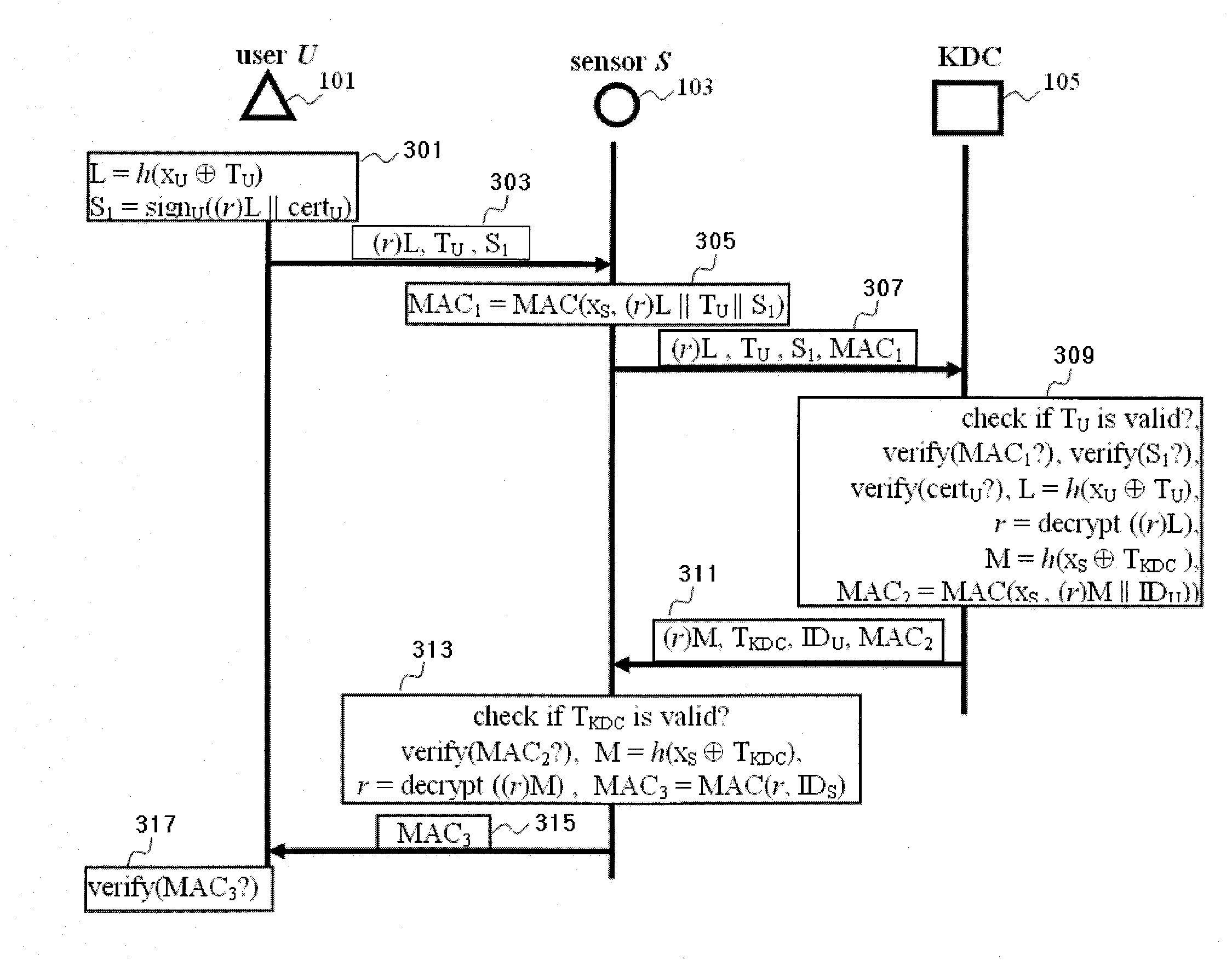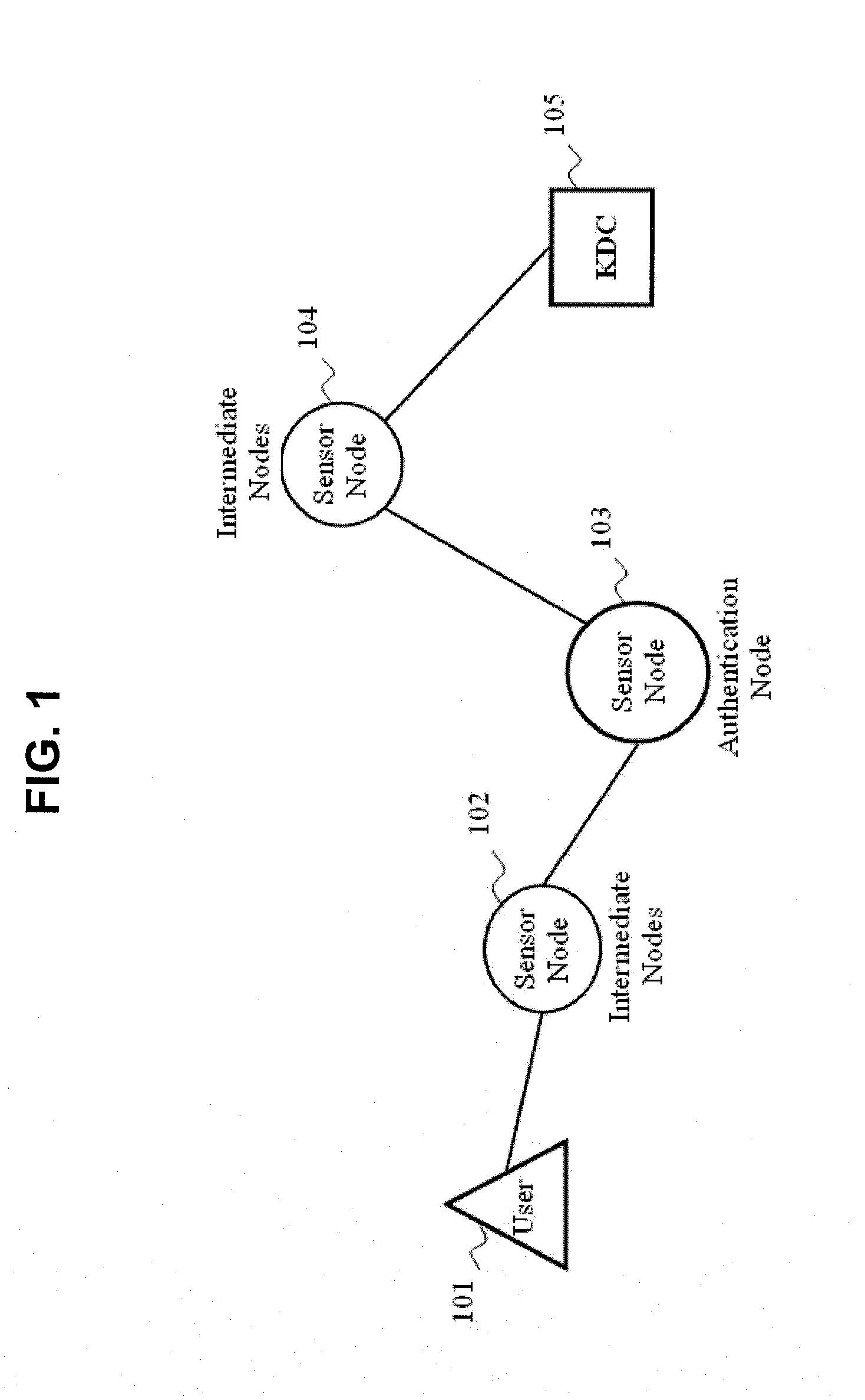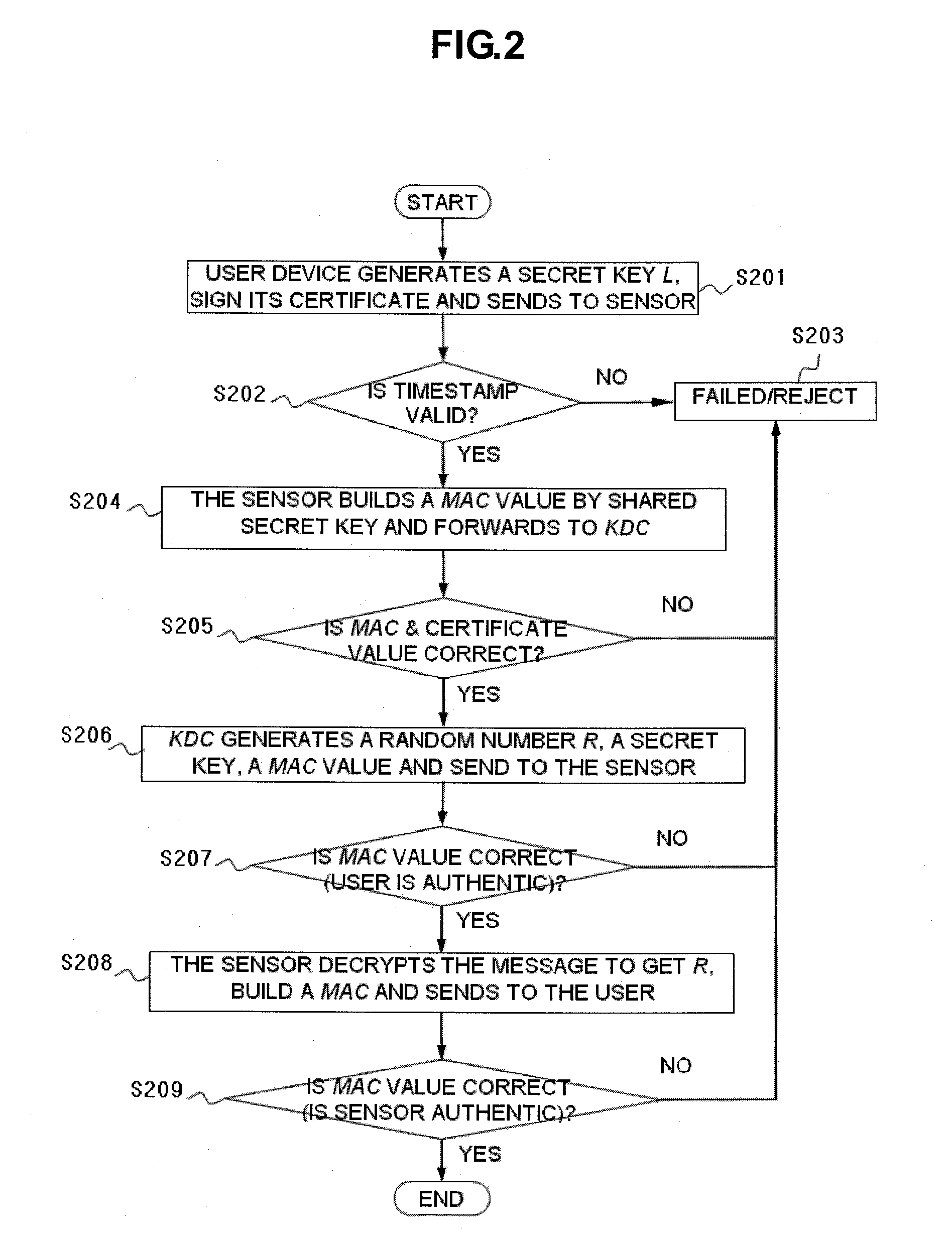Method for controlling user access in sensor networks
- Summary
- Abstract
- Description
- Claims
- Application Information
AI Technical Summary
Benefits of technology
Problems solved by technology
Method used
Image
Examples
Embodiment Construction
[0014]FIG. 1 illustrates communication between a user 101, an authentication sensor node 103 and a key distribution center (KDC) 105 via intermediate nodes 102, 104 of a sensor network according to an embodiment of the present invention.
[0015]Here, the term ‘user’ refers to either human or a device that he is using for access control. The KDC is responsible for generating all security primitives, issuing and revoking user's access privileges and the KDC is fully trusted. The intermediate nodes store a pair of ECC private and public key. The sending node and the receiving node know the ECC public key of each other.
[0016]Initially, the Key Distribution Center (KDC) 105 selects a particular elliptic curve over a finite field GF(p) (where p is a prime), and publishes a base point P with a large order q (q is also a prime). KDC 105 picks a random number kKDCεGF(p) as the system private key, and publishes its corresponding public key QKDC=kKDC×P. KDC 105 also generates private—public keys...
PUM
 Login to View More
Login to View More Abstract
Description
Claims
Application Information
 Login to View More
Login to View More - R&D
- Intellectual Property
- Life Sciences
- Materials
- Tech Scout
- Unparalleled Data Quality
- Higher Quality Content
- 60% Fewer Hallucinations
Browse by: Latest US Patents, China's latest patents, Technical Efficacy Thesaurus, Application Domain, Technology Topic, Popular Technical Reports.
© 2025 PatSnap. All rights reserved.Legal|Privacy policy|Modern Slavery Act Transparency Statement|Sitemap|About US| Contact US: help@patsnap.com



